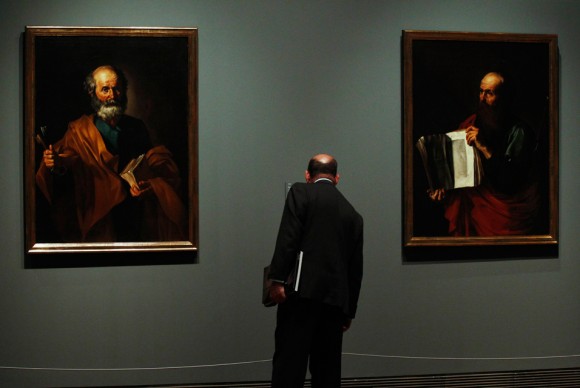Prado Museum Presents an Exhibition of a Previously Unknown Period in Ribera’s Career
MADRID.- The Museo del Prado presents The Young Ribera, a survey of Ribera’s activity during his period in Rome and in the years following his arrival in Naples in 1616. The exhibition runs from April 5 through July 31, 2011. This is a period of Ribera’s career that was almost completely unknown until recently and one that is the subject of an extremely interesting debate among art historians. Featuring more thirty two works, the exhibition allows for comparisons between the most important paintings currently considered to date from the period in question and focuses on their dating and role in the development of Roman Caravaggesque painting in the second and third decades of the 17th century. Among the works on display is The Raising of Lazarus, acquired by the Museo del Prado in 2001 and now considered to be one of the key reference points in the debate on Ribera’s early artistic activities.
Within the context of recent research on Spanish painting, the reconstruction of Ribera’s activities from 1610 to 1622, during his time in Rome and the early years of his period in Naples, is of particular importance. Over the last ten years there have been considerable advances in our knowledge and interpretation of this early phase of his career. New studies have contributed previously unpublished data on the places where the Valencian artist lived, his circle of clients and his financial situation. Most significantly, however, stylistic analysis and new documentary information has meant that Ribera can now be identified as the previously anonymous “Master of the Judgment of Solomon”, allowing for the addition of several dozen works to his oeuvre. With regard to the Museo del Prado, the general importance of an exhibition that offers an in-depth focus on Ribera, one of the Spanish artists best represented in its collections, is combined with the fact that it enables a very precise context to be established for a study and assessment of The Raising of Lazarus. Although the subject of considerable debate at the time of its acquisition in 2001, the attribution to Ribera is now generally accepted. Most of the works by Ribera in the Prado are much later in date, as a result of which the present exhibition provides an ideal occasion for fully analysing and appreciating this great painting and assessing its outstanding significance within the context of the artist’s early career.
The thirty two works on display have been loaned by museums and collections in Spain, Italy, France, the UK, Mexico, Switzerland, Hungary and the USA. They include examples of paintings from the two principal series that Ribera executed during this period (the “Apostle Series” and “The Five Senses”), as well as the more complex compositions that he produced in Rome and Naples. As a result, the exhibition allows visitors to discover the subjects that most interested the young painter and to understand the way in which his style evolved and developed to the point where Ribera became one of the most original and powerful naturalist painters subsequent to Caravaggio. The installation of the exhibition in the light and flexible space of Room C in the Prado reveals relationships and comparisons between the paintings and create a discourse that explains the directions in which Ribera’s art moved. This is particularly important, as it allows for an appreciation of the remarkable way that the artist’s work changed and evolved since its outset, explaining why many of his early works were for many years attributed to the anonymous “Master of the Judgment of Solomon”.
Related posts:
- The Museo del Prado extending the exhibition “A Passion for Renoir”
- Spanish King Juan Carlos and Queen Sofia Open “The Prado in the Hermitage” Exhibition
- SMU’s Meadows and Prado Museum Officials Sign Partnership Agreement in Madrid
- The Hermitage and the Prado Announce Exchange of Important Selection of Works
- Museo del Prado Publishes First Multi-Interactive, Online Video Relating to Art

